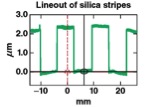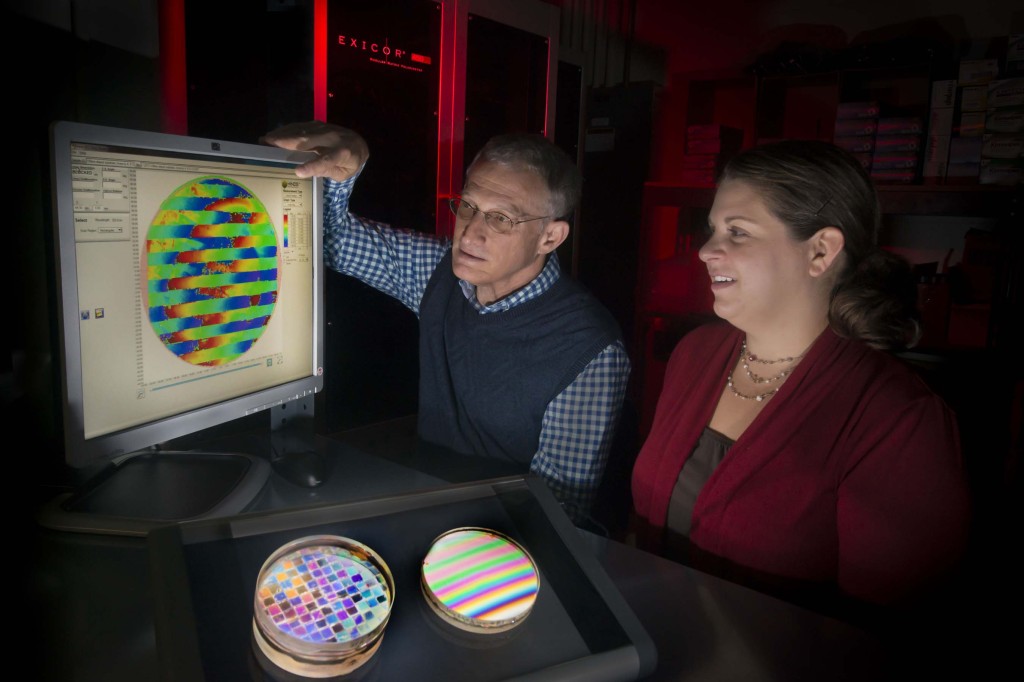PhD student Debra Saulnier, Brittany Taylor (photo, courtesy of Eugene Kowaluk) and Prof. Stephen Jacobs recently published a paper, “Liquid crystal chiroptical polarization rotators for the near-UV region: Theory, materials, and device applications” in SPIE Proceedings: Conference 8828: Liquid Crystals XVII (2013).



Abstract: The helical structure of a chiral-nematic liquid crystal (CLC) material produces a number of interesting optical properties, including selective reflection and optical rotatory power. This work demonstrates the first experimental observation of extraordinarily high optical rotation (>30°/mm) in the near UV for a long-pitch (13.8-mm) CLC mixture composed of the low-birefringence nematic host ZLI-1646 doped with a low concentration (e.g., 1 wt%) of the chiral dopant CB 15. This experimental finding is verified theoretically using a mathematical model developed by Belyakov, which improves on de Vries’ original model for optical rotation far from the selective reflection peak by taking into account the nonlinearity of optical rotatory power as a function of liquid crystal (LC) layer thickness. The optical rotation at λ= 355 nm for the 1% CB 15/ZLI-1646 mixture is determined computationally, with the results in agreement with experimental data obtained by evaluating a series of wedged cells using an areal mapping, Hinds Exicor 450XT Mueller Matrix Polarimeter (photo above left). This finding opens a path to novel LC optics for numerous near-UV applications. One such envisioned application for this class of materials would be UV distributed polarization rotators (UV-DPR’s) for large-aperture, high-peak-power lasers.
Spring 2014



